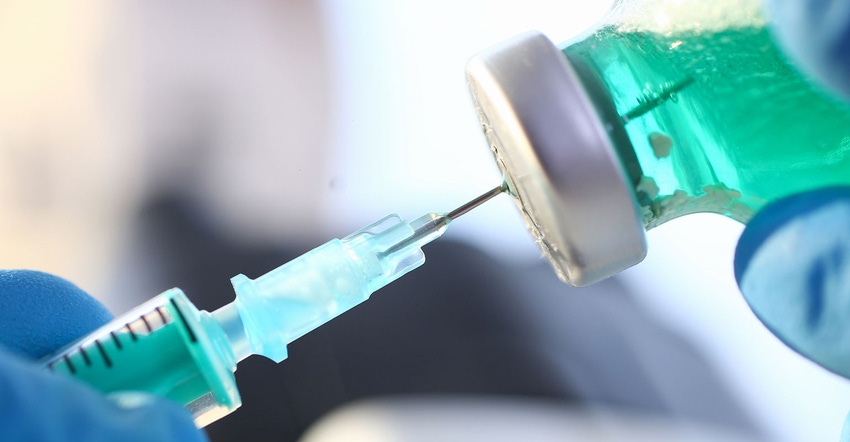February 5, 2021

Developing a vaccine to stop a devastating disease is no easy task, and sometimes it requires innovative thinking to solve problems along the way. Researchers at the International Livestock Research Institute in Kenya and collaborators at Colorado State University have found a key to an important part of vaccine development that could be a game changer in stopping African swine fever.
Today, the only control for ASF is biosecurity, and if a herd is infected, it is euthanized. There is no cure or preventive for the virus. Scientists around the world are at work on a vaccine, but there are challenges.
Edward Okoth with the institute explains that it is possible to develop a vaccine against the disease, and there are many approaches being tried, including recombinant DNA vaccines and even those with attenuated viruses. But ASF presents its own challenges.
“The virus is a large, double-stranded DNA virus with a relative stable genome,” Okoth explains. This reduces the chances that the virus will mutate, unlike COVID-19, an RNA virus that mutates more easily.
The use of an attenuated version of the virus is an area being tried, too, but Okoth notes that there are safety concerns with that approach. In addition, production of the vaccine with an attenuated virus would require high containment. “And current strains may not be sufficiently attenuated, or additional genes have not been deleted from attenuated strains that may be involved in virulence,” he explains. Researchers are not clear on what genes are involved in virulence, which makes building a truly attenuated version of the virus a challenge.
Bring on whole virus
The answer is to find a new way to kill the virus but provide, in a vaccine, the proteins needed to spur the animal’s immune system into action. Okoth says a collaboration between ILRI and CSU is addressing the concern. And the solution was to turn to a tool that’s been used for more than a decade to purify blood before it is transfused.
The system being researched is the Mirasol process, where a sample of the virus is mixed with riboflavin — Vitamin B2 — then treated with a specific amount of ultraviolet light. This breaks down the nucleic acids in the virus, but it contains all the antigenic targets. "But it has no capacity for replication, and it can be used as a vaccine in pigs," says Okoth.
This is a simple process that uses compact, proven bench-top tools that allow for researching the virus in remote areas. Solving the problem of getting a killed virus with the right antigenic properties is a big step in vaccine development.
“We’ll look at low, medium and high dose levels, using specific adjuvants, to assess immune responses,” Okoth says. “Depending on the immune responses we get, we can determine if this gives us a better vaccine.”
Ray Goodrich, director of the Infectious Disease Research Center, explains that there are a variety of ways to create inactivated virus vaccines using the whole microorganism. “A common approach is to use chemical agents for vaccine production and they basically work to disrupt the ability of the virus particle to replicate and attach to cells,” he explains.
Goodrich is partnered with Okoth on ASF vaccine development and took on the challenge to create an inactivated vaccine that maintained the structure of the virus as close as possible to the natural pathogen.
“I describe this like an egg you scramble but leave the shell intact,” he says. “The nucleic acid [in the virus] has been disrupted but the particle itself remains.” It’s that particle that contains key proteins that trigger an immune response and protect the host animal.
Using that Mirasol process, which will be called SolaVax for vaccine development, Goodrich says it’s possible to create an inactive virus without destroying natural epitopes and antigens. The process, while being deployed with ASF, is also being explored with COVID-19 at CSU.
ASF vaccine process benefits
There are key benefits to the Mirasol process being used to develop the ASF vaccine.
First, it uses simple ingredients — riboflavin and ultraviolet light — which leave few impurities or process chemicals behind. Goodrich explains that the process has been successfully used to treat blood before transfusion with little concern.
Second, the tools are compact and can be deployed pretty much anywhere with power, which allows vaccine research as close to the area where the disease is endemic as possible. The institute has these processing tools at work in Kenya.
Third, the cost of this process makes it attainable and affordable in both high- and low-income locations around the world.
The vaccine is not finalized yet, but this virus attenuation process is helping move the development ball down the field faster.
About the Author(s)
You May Also Like






